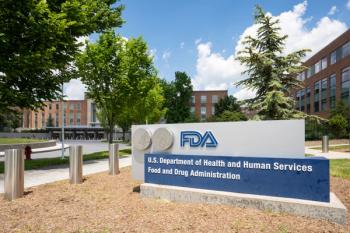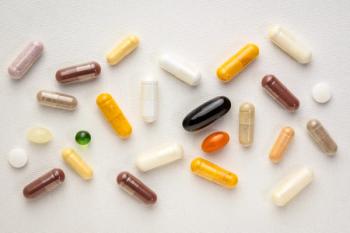
Practice Pearl #1: Risks and Benefits of Warfarin
The panel discusses the risks and benefits of warfarin in the use of thrombosis.
Jessica Kerr, PharmD, CDE: Paul, you briefly talked a little about monitoring capabilities. But Matt, obviously the world of monitoring has been a barrier for some time since Coumadin and everything else. Then we’re looking at how we handle low molecular weight heparin several years ago. Now we’re looking at the DOAC monitoring, which has always been perceived to be a benefit with these agents. Talk to us about the suggested anticoagulant when a DOAC is not utilized or not recommended. Specifically, what are the risks or benefits of using warfarin?
Matthew Johnson, MD: Yeah, what you’re talking about is if you can’t use a DOAC for whatever disease state you’re treating, most likely it is warfarin you’re talking about, unless it’s the arterial indication that Paul brought up. Ultimately let’s start with the benefits of Coumadin. We’ve learned for many years that we have better drugs out there with the DOACs, so we got away from seeing the benefit. Really, the benefit of it is a couple of niche places. One is mechanical heart valves in there. The other benefit truly is monitoring; we got so used to monitoring. We had warfarin clinics, or Coumadin clinics, set up as you were talking about earlier, and we got very comfortable adjusting the doses, but there are a lot of pitfalls with Coumadin. We can talk for a long time about just the different areas that it lacks, including the time to therapeutic range. Even when you have well-designed studies looking at even though we falsely believe we have these patients in that goal zone, between an INR of 2 and 3, we might be falsely reassuring ourselves. A lot of these studies are pointing that there is a majority of time, and they may actually not be in therapeutic range. A big pitfall, of course, is the other interactions we see with diet factor, with Coumadin and vitamin K, just a very difficult-to-control roller-coaster ride. Those are the biggest risks when you use warfarin. All the other studies show the efficacy of the DOACs is usually a little better and so is the safety profile, when we compare the safety and efficacy data that we have with those large studies.
Paul Dobesh, PharmD, FCCP, BCPS: Let me just add to that really quickly, from a pharmacy perspective, drug interactions. Oh my gosh, there are like 100 clinically relevant drug interactions with warfarin that you just have to figure out what to do with. Then there are drug interactions with DOACs. Everyone knows that, but you could probably count them on your fingers, maybe a toe or 2. But they’re manageable. Then there is the diet thing. The more I’ve been in practice, the more I realize that that’s a bigger deal than even I used to think it was when I was early in practice. Because we’re always taught, and I have taught, that patients can eat vitamin K—containing foods; just keep a balance. That’s a lot easier to say than to do. If someone has a kale salad today, how do you balance that tomorrow without another kale salad? The amount of vitamin K in some of these foods, you can’t balance it day to day. There are a lot of patients who periodically eat these things. It’s very hard for them to maintain a consistent amount of vitamin K every day and to know how much vitamin K is in this food versus that food. I don’t teach that anymore. I tell them that that’s what they’re going to hear, but I realize it’s a lot. You will tell your patients that, but you also need to let them know that it’s pretty hard to do. So if warfarin is the route we’re going to go down, that’s going to be challenging.
Paul Dobesh, PharmD, FCCP, BCPS: Jessica, you’ve worked in these clinics as well.
Jessica Kerr, PharmD, CDE: Yeah, the diet indefinitely was the biggest concern with a lot of our patients. Besides using alcohol or that type of thing when we’re specifically thinking about warfarin, there is also bleeding risk with therapies. For myself, if there is DVT during pregnancy, and I’m supposed to be eating healthy. Now you’re telling me I can’t or I have to balance it, as you said. How do you balance it? Do I have an extra ice cream that day? Treat for me. Definitely the vitamin K concern, especially when you’re looking at a lot patients who are on therapies for the cardiovascular indication, is also having to monitor healthy diets for hypertension, lipids, diabetes. They felt as if they were constantly having 3 to 4 different diet plans they were supposed to follow for those individual disease states, and then you throw on that therapy as well.
Paul Dobesh, PharmD, FCCP, BCPS: Yeah, we’re talking about obese patients, right? Hopefully at the same time, we’re talking about healthy diets low in calories and low in fats, leafy vegetables are going to be part of that. Especially in the obese population, the diet thing hopefully is because, hopefully, they’re trying to lose some of that weight. But that’s going to be a big issue.
Jessica Kerr, PharmD, CDE: Yeah, right.
Matthew Johnson, MD: The other thing from a patient standpoint is just lab draws and time away from job or work, or environment for coming in for that test. It’s the routine monitoring.
Newsletter
Stay informed on drug updates, treatment guidelines, and pharmacy practice trends—subscribe to Pharmacy Times for weekly clinical insights.










































































































































































































